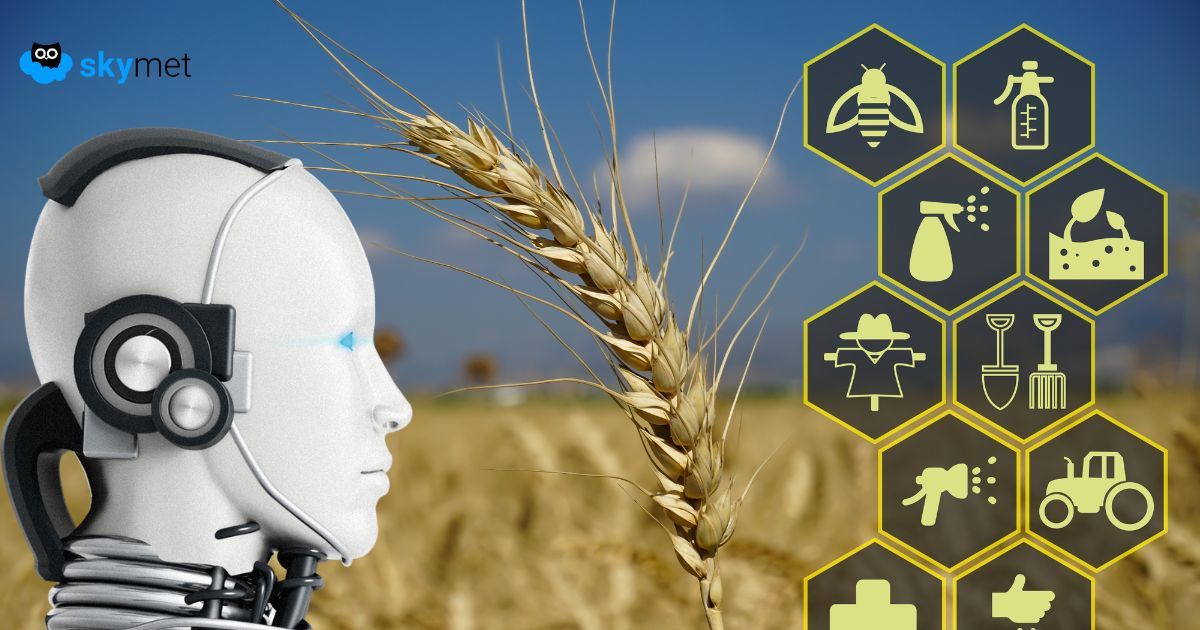AI in Agriculture: Bridging India’s Yield Gap with Smart Farming
Despite decades of progress in agriculture, India continues to struggle with a persistent yield gap, the difference between what farmers currently harvest and what they could ideally produce. This gap is especially stark in staple crops like rice and wheat, where actual yields lag far behind global benchmarks. As climate variability, erratic rainfall, pest infestations, and post-harvest losses continue to plague India’s smallholder farmers, the country stands at a crossroads: embrace innovation or risk stagnation.
Enter Artificial Intelligence (AI), a powerful tool that’s rapidly transforming global agriculture and holds the promise to revolutionise Indian farming. With the ability to analyse vast data sets, predict outcomes, and offer real-time insights, AI is emerging as a critical enabler in bridging the yield gap and future-proofing Indian agriculture.
Smart Solutions from Seed to Market
AI is not just a buzzword; it is a practical, field-ready technology already being deployed at different stages of farming. Before the seeds even touch the soil, AI-powered platforms can assess soil health, recommend the most suitable crops, and suggest the optimal sowing time based on climatic patterns. During cultivation, smart sensors, drones, and satellite imagery feed real-time data into AI systems, which then diagnose plant stress, pest attacks, or nutrient deficiencies with pinpoint accuracy. This facilitates precision farming, where water, fertiliser, and pesticides are used only when and where needed, reducing waste and increasing yields.
After harvest, AI steps in this time to manage logistics, forecast market demand, and streamline pricing and storage. With 30-40% of agricultural produce wasted due to inefficient post-harvest practices, AI-backed systems can significantly reduce losses, improve shelf life, and ensure farmers earn better returns.
Real Impact, Real Farmers
Pilot projects across the country have already begun to show how AI can transform livelihoods. In Andhra Pradesh, AI-based advisory apps have helped increase crop yields by up to 30%. Meanwhile, in Telangana, a flagship project has made headlines. The 'Saagu Baagu' initiative, launched in Khammam district, has improved the chilli value chain for over 7,000 farmers. By using AI for real-time advisories and pest control, farmers saw a 21% increase in yield, significant input cost savings, and a jump in income of over ₹66,000 per acre—effectively doubling earnings per crop cycle.
Following its success, the project has been expanded to ten districts, aiming to benefit 500,000 farmers across five crops. Such initiatives are proving that AI is not just theory—it is making measurable differences in the lives of farmers.
Government Support, but Challenges Remain
Recognizing AI’s transformative potential, the Government of India launched the Digital Agriculture Mission (2021–2025) to integrate advanced technologies like AI, drones, and blockchain into farming. While this is a step in the right direction, several challenges continue to hinder large-scale adoption.
The first hurdle is data. AI thrives on high-quality, granular datasets, but much of India’s farm-level data is fragmented, outdated, or simply unavailable. Without reliable data on soil, weather, crop cycles, and inputs, AI predictions become less accurate. Second, digital infrastructure in rural India remains inadequate. Poor internet connectivity, low smartphone usage, and lack of localized apps reduce the reach of AI-based services. Third, affordability is a real issue. Small and marginal farmers, who make up over 80% of India’s farming community, often find these technologies financially out of reach without government subsidies or cooperative-based access models.
Then there is the trust factor. Many farmers continue to rely on traditional wisdom and are hesitant to follow AI-generated advice, especially if it’s not communicated in regional languages or supported by demonstrable results.
The Way Forward
To bridge the gap between AI and the Indian farmer, a multipronged strategy is essential. Open-source agri-data platforms, stronger rural internet infrastructure, and low-cost access to AI tools via Farmer Producer Organisations (FPOs) or cooperatives can help democratise this technology. Training local leaders and agronomists to facilitate AI adoption will ensure that digital solutions are rooted in community trust.
At its core, AI is not about replacing farmers but empowering them. With the right blend of technology, policy, and grassroots outreach, India has a unique opportunity to shift from subsistence to surplus. The journey won’t be without hurdles, but the destination—a smarter, sustainable, and more productive agricultural future—is well within reach.













